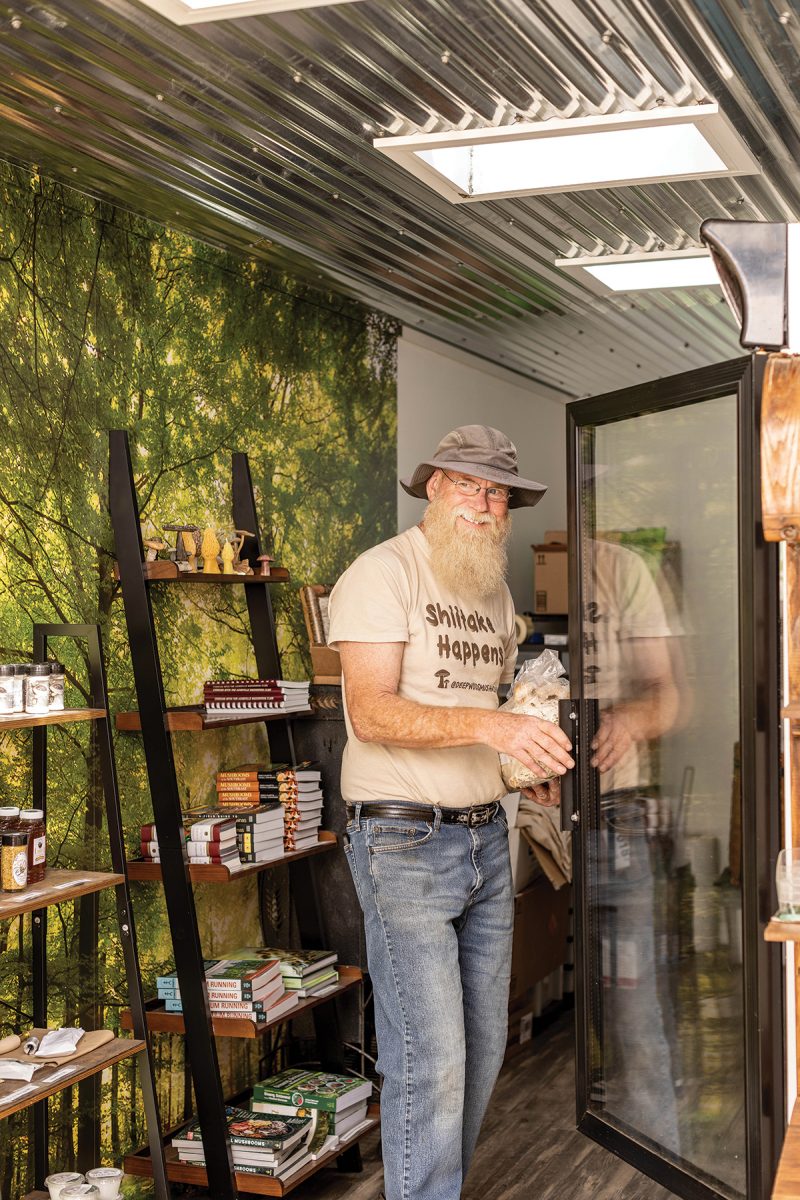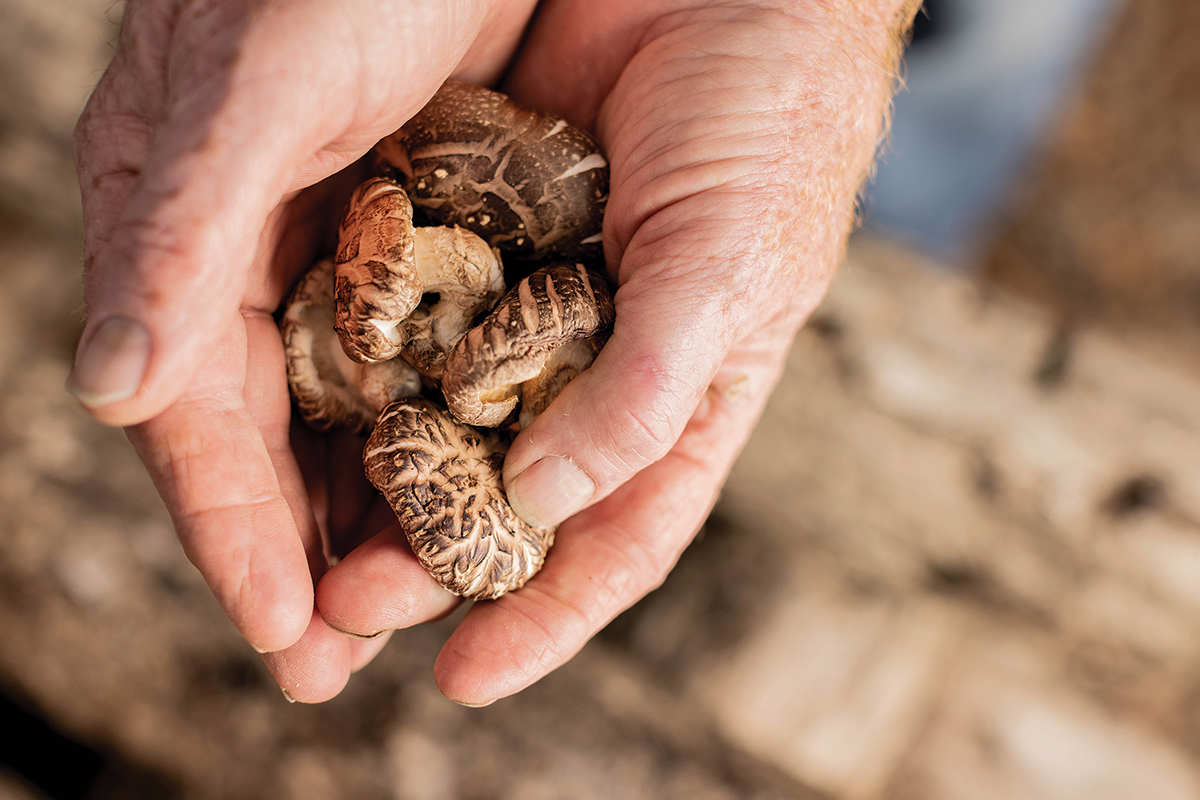Growing fungi for fun, profit, and the proliferation of ancient skills

Photo by Jack Robert
In 1999, Greg Carter wanted to make culinary Christmas gifts for friends and family, so he tried his hand at growing shiitake mushrooms on a few logs. The experiment went so well that within six years it had mushroomed into a full-time business, Deep Woods Mushrooms. Now he farms gourmet mushrooms on more than 2,000 logs, from the comfort of home, harvesting as many as 75 pounds of the delicacies per week during growing season.
Carter not only sells his mushrooms at tailgate markets in Western North Carolina, but he hosts frequent workshops to teach others how to grow their own. “First you have to understand how they grow in the wild,” he says, “and there are so many different strains that you can’t generalize. But once you know those conditions, you can mimic them.”
And while most food gardens require many consistent hours of sunlight, a lack of full sun is an advantage — really a necessity — when growing mushrooms, which typically need 80-percent shade.
Once they are seeded, shiitakes start to fruit after about eight months to a year, whereas oyster mushrooms produce within as little as six months. Since mushrooms are perennials, they will continue to proliferate under the right conditions. “You can start with as few as 15 logs that you inoculate,” says Carter, “and from there, you can grow enough to keep cooking and eating them for years.”

Photo by Jack Robert
There are, however, some extremely popular varieties native to the region that Carter advises are best left to Mother Nature to grow. Instead of struggling to grow them at home, he finds it more efficient and productive to forage for those — which include reishis, morels, Chicken of the Woods, and chanterelles. That doesn’t have to be an obstacle for the untrained, either, because Carter hosts numerous workshops and excursions into the woods to educate others about how to safely and successfully forage.
He acknowledges that picking and eating the wrong one can be hazardous, saying, “The joke is that all mushrooms are edible once. But in my classes I can show you how to identify species like chanterelles, Lactarius, and lobster mushrooms.”
Learning is a big part of the attraction for “shroomers” like Carter, who’s spent a lifetime pursuing knowledge and skills. To start, he suggests taking a class or joining a foraging group like the Asheville Mushroom Club. The more people who gain mushroom know-how, the more likely it is that this old-school skill will stay alive for future generations.
“It’s a science,” says Carter, “and you need to get to know the fungi the way a birder knows birds.”
Greg Carter, Deep Woods Mushrooms, Mills River, 828-243-3589, information on classes at deepwoodsmushrooms.net. Carter vends at the following seasonal markets: Transylvania Farmers Market (200 East Main St., Brevard), through October, Saturday mornings 9am-noon; Saluda Tailgate Market (West Main St. in downtown Saluda), through October, Friday afternoons 4:30-6:30pm; and Etowah Lions Club Farmers Market (447 Etowah School Road, Hendersonville), through October, Wednesday afternoons 3-6pm.
